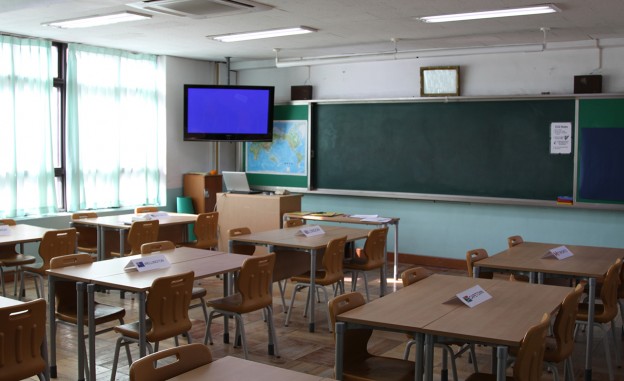Leyla Akincilar is a former administrator, teacher, coach and curriculum director. After 13 years in urban education, both in public and charter schools, Akincilar recently took her skills from the classroom at KIPP Bayview Academy to EduCrate, an ed-tech startup that is curating educational videos to help teachers bring rigor, differentiation and engagement to their lessons. The videos are stored in The Cratrix, an interactive online library organized according to the Common Core standards. EducationShift talked with Akincilar about her experience with video education and how other educators can best incorporate it.
Q&A
What does video do for the learning process that tradition lecturing or textbooks do not?

Leyla Akincilar: The video engages students in multiple ways — auditory, visually — and they can learn on those different levels. The other thing I think it provides that is really interesting is the ability to embrace blended learning, in that you can remediate with video and you can use direct instruction with video and you can do extension with video. You can have all of those different levels of instruction which is really what blended learning is all about — getting more individualized attention to students.
Are there any drawbacks to using video in the classroom? What should educators be cautious about?
Akincilar: If you are using video more than you are using text, I think that is worrisome because you still have to interact with text constantly. That’s how all of the assessments that students will be taking in high school and in college will be. So to be able to critically think around the text is the most important skill to bring out of secondary education and it has to go hand in hand with video.

Video is used best as a complement to textual analysis and professional instruction. Photo by Ricardo Mendonça Ferreira and used here with Creative Commons license.
How does the introduction of Common Core affect the use of digital tools and video in the classroom?
Akincilar: It really comes down to the assessments that are being given at the end of the year — Common Core Assessments. Video is going to be more necessary because part of the assessment involves video. They have these “constructive responses” for the English tests that ask students to watch videos, listen to interviews and/or read text, and then respond to the idea in a specified format. So the video is being used in that way in the classroom — not just for engagement — but to spark critical thinking. That’s a process that kids need to practice more in the classroom.
The other part of it is that a big chunk in the Common Core standards in English is the listening and speaking test, which is kind of new. California, for example, had them, but they were not assessed. So if that is now a part of it, then that’s something that they have to practice with more often — listening, watching, responding in a group.
What advice would you give educators who are curating videos for their classrooms or the Cratrix? What works?
Akincilar: The angle that I’m taking or the advice I would give is to have a variety of videos that speak to different purposes. You have that direct instruction video — like Khan Academy — where it is an instructor showing the process and whether you hear that instructor’s voice or they’re standing in front a board, students are given a traditional lesson. That is just one type of video. I would suggest a video that looks at the skill from a different angle.
For example, if you want to teach perspective in narrative plot structure, you could show clips of videos taken from different perspectives — shots from above or below or a shot where characters are not aware they are being looked at. Bring in something that is original and creative — that sparks the curiosity and engagement. Have something that’s going to push their thinking for enrichment and something that can be used for remediation for students who need a little bit more than what you give them in the class. Having a variety in the video playlist is really, really important.
For those educators who may be hesitant to use video in the classroom, what are some easy first steps or startup uses?
Akincilar: A good place to start would be to organize a tutorial after school or some kind of smaller group, especially if they are students who need some remediation. It’s hard to get kids motivated when they feel behind and using video is a way to engage them, and then if the educator is also new to it, starting with a smaller group of kids is better.
In five years, what kind of changes will we see in high schools, and how will they affect student learning?
Akincilar: Well what I think, or at least what I hope, is that there will be more devices available in high schools. And whether it’s a bring-your-own-device trend or if schools can provide the device, that’s going to open the door to more individualized instruction and immediate feedback. That loop of individualism and instantaneous feedback will accelerate a lot of students’ learning. It will also initiate a move toward digital and less paper. The other thing I see is just more gamification of the classroom. We are being gamified in so many ways, whether it’s in the classroom or outside of the classroom, and I think that’s definitely a trend that’s going to keep moving forward.
Meagan Doll is a junior at the University of Wisconsin-Madison studying journalism. She is an intern for the EducationShift section at PBS MediaShift.



